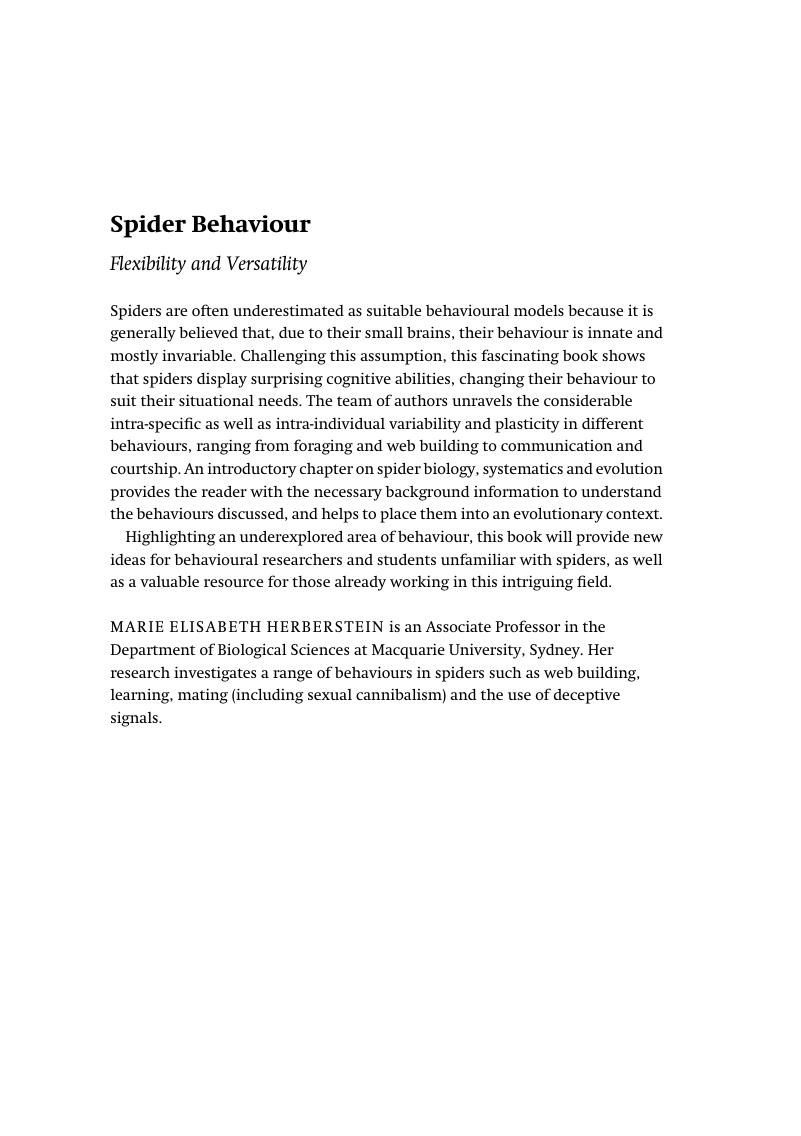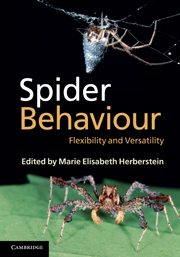Book contents
- Frontmatter
- Contents
- List of contributors
- How this book came about
- 1 Introduction: spider biology
- 2 Flexibility in the foraging strategies of spiders
- 3 Spider webs: evolution, diversity and plasticity
- 4 Flexible use of anti-predator defences
- 5 Communication
- 6 Deceptive signals in spiders
- 7 Mating behaviour and sexual selection
- 8 Group living in spiders: cooperative breeding and coloniality
- 9 Plasticity, learning and cognition
- 10 Kleptoparasitic spiders of the subfamily Argyrodinae: a special case of behavioural plasticity
- Index
- Plate section
Frontmatter
Published online by Cambridge University Press: 05 June 2012
- Frontmatter
- Contents
- List of contributors
- How this book came about
- 1 Introduction: spider biology
- 2 Flexibility in the foraging strategies of spiders
- 3 Spider webs: evolution, diversity and plasticity
- 4 Flexible use of anti-predator defences
- 5 Communication
- 6 Deceptive signals in spiders
- 7 Mating behaviour and sexual selection
- 8 Group living in spiders: cooperative breeding and coloniality
- 9 Plasticity, learning and cognition
- 10 Kleptoparasitic spiders of the subfamily Argyrodinae: a special case of behavioural plasticity
- Index
- Plate section
Summary

- Type
- Chapter
- Information
- Spider BehaviourFlexibility and Versatility, pp. i - ivPublisher: Cambridge University PressPrint publication year: 2011

